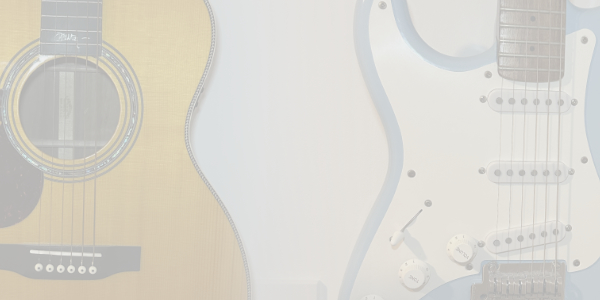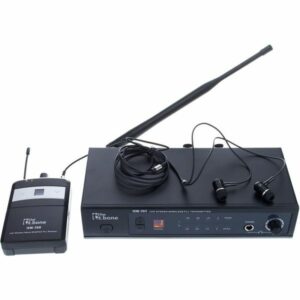
The Sonic Revolution: Why Your Band Should Make the Switch to In-Ear Monitors

Introduction
In the dynamic world of live music, the quest for the perfect sound is a perpetual journey for musicians. As technology advances, so do the tools available to enhance the performance experience. One such innovation that has been gaining popularity is the transition from traditional stage monitors to In-Ear Monitors (IEMs). This shift not only safeguards musicians’ hearing but also propels the band towards a tighter, more synchronised performance.
So why should you and your band look at moving toward In-Ear Monitors? Well, for a vast number of reason, some of which we will go into details about below! So let us start with the main one! Your Hearing!
Protecting Your Precious Hearing
Musicians often find themselves in the midst of thunderous amplifiers, blaring speakers, and an audience hungry for an immersive sonic experience. In such an environment, the risk of hearing damage becomes a looming threat. Traditional stage monitors, while effective in delivering sound, contribute significantly to this risk.
In-Ear Monitors provide a personalised and controlled audio experience for each band member. This tailored approach minimises the need for excessive stage volume, reducing the overall noise exposure. Hearing loss, a prevalent issue in the music industry, can be mitigated by making this simple yet impactful switch. Preserving your hearing isn’t just a matter of personal well-being; it directly influences the longevity of your musical journey.
Tailored Sound for Every Ear
In-Ear Monitors are more than just protective gear; they serve as a portal to a world of customised sound. Each band member can have their mix tailored to their preferences, ensuring they hear exactly what they need to perform at their best. This level of personalisation fosters a deeper connection to the music and enhances the overall quality of the performance.
Imagine a drummer locking into the groove with crystal-clear clicks, a vocalist effortlessly hitting every note with pitch-perfect precision, and a guitarist hearing the subtle nuances of their instrument. In-Ear Monitors facilitate this level of detail, transforming your live performance into a finely tuned symphony where every instrument has its moment to shine.
The Synchronisation Advantage
One of the most remarkable outcomes of adopting In-Ear Monitors is the remarkable improvement in band cohesion. With each member having control over their individual mixes, communication on stage becomes more precise. The days of struggling to hear your bandmates over the cacophony of stage noise are replaced by a seamless exchange of musical cues.
The synchronisation advantage of IEMs becomes evident during complex arrangements, intricate tempo changes, and spontaneous improvisations. Bands find themselves locked into a tighter, more cohesive groove, creating a musical synergy that resonates with both the performers and the audience.
Breaking Free from Feedback Nightmares
Traditional stage monitors are notorious for causing feedback issues, especially in smaller venues with limited sound control. In-Ear Monitors eliminate this common headache by delivering sound directly into the musician’s ears, bypassing the risk of feedback loops. This not only ensures a cleaner, more professional sound but also allows for a more flexible and stress-free performance.
The freedom from feedback nightmares translates into a more confident and focused stage presence. Musicians can concentrate on delivering their best performance without the constant worry of unexpected sonic disruptions, enhancing the overall live experience for both the band and the audience.
Embracing Technological Advancements
As technology continues to evolve, so do the capabilities of In-Ear Monitors. The advent of wireless IEM systems further elevates the live music experience. The freedom to move around the stage without being tethered to cables enhances the visual aspect of the performance, creating a more engaging and dynamic show.
Wireless IEMs also enable seamless communication among band members, allowing for real-time adjustments to the mix during the performance. This adaptability contributes to a more responsive and interactive live experience, solidifying the band’s connection with their audience.
In-Ear Monitors Recommendations
Now, In-Ear Monitors (IEMs) can be expensive and daunting to set up! However, due to the way they work, you can start small and build up. There are budget single units you can look at (Like the ones we reviewed from Leakto, Check out the review here), or you can buy the full transmitter and receiver and run multiple receivers on one transmitter. Or go all the way and have a separate mixer, and splitter cable and run your own In-Ear Monitor system. The choice is yours and depends on budget and scale.
For example, if you are just a 4 piece band, you could start off by buying two of these systems here (Affiliate link). And running two mixes across the band, you will all be on IEM and it is a great start, you can work to buying more units and then your own monitor and going from there. You don’t have to dive in and spend £1000+ on a full rig to start with!

Conclusion
In the pursuit of musical excellence, embracing innovations like In-Ear Monitors is not just a choice; it’s a necessity. The protection of your hearing, the personalisation of your sound, and the synchronisation of your band all converge in the realm of IEMs.
As the music industry marches forward, those who adapt and harness the power of cutting-edge technology will find themselves not only preserving the art of sound but also pushing the boundaries of what’s musically possible. So, why should your band make the switch to In-Ear Monitors? Because in doing so, you’re not just protecting your ears; you’re unlocking the full potential of your musical journey.
If you want to support the site then please give us a follow on Instagram and subscribe to our YouTube.
Check out our other Articles here

